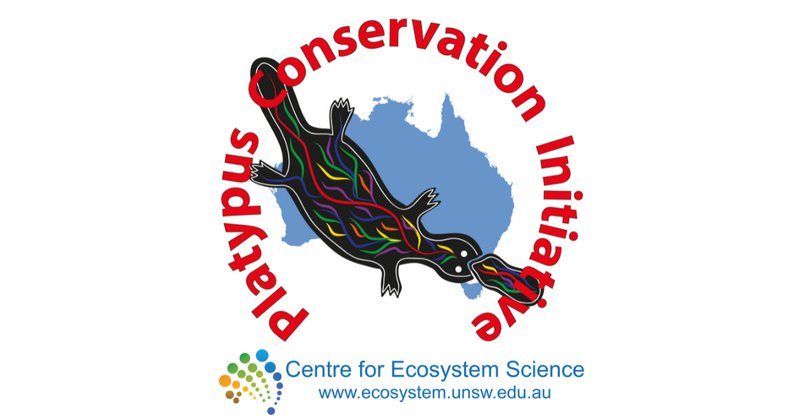
Platypus Conservation Initiative
@Platypus_CI
Followers
937
Following
175
Media
80
Statuses
189
Conserving platypuses and their freshwater habitats through research, advocacy, and education for over a decade.
Joined August 2020
This rescued juvenile platypus melted 8 million hearts on Instagram. Now it's your turn, X. Cared for by @Platypus_CI and released back home. We promise it’s the cutest thing you’ll see. Let’s break the internet. Share far and wide!🧡
8
60
195
Exciting update from Royal National Park: Platypus numbers are increasing with new juvenile discovered! At least three platypuses have hatched in the park, thanks to UNSW's successful reintroduction program. Restoring ecosystems one platypus at a time! #PlatypusConservation
0
12
55
Platypus PhD offer - Platypus Conservation in Urban Environments University of NSW UNSW Sydney & Brisbane https://t.co/FRkk0N8mYG
nrmjobs.com.au
University of NSW - UNSW Sydney & Brisbane
0
1
1
Exciting PhD opportunity to study platypus conservation in urban environments at UNSW Sydney! Dive into fieldwork, genomics, and modelling to protect this iconic species in Brisbane's catchments. Fully funded, starts March 2026. Apply: https://t.co/MNwEcrcaZi
@brisbanecityqld
unsw.edu.au
The Platypus Conservation Initiative at the Centre for Ecosystem Science (UNSW Sydney) is seeking a motivated PhD student for an exciting project investigating the ecology and conservation of...
0
0
3
Don't forget. Tomorrow @ the Australian Museum. A monotreme extravaganza.
Monotremes—ancient, egg-laying mammals—once thrived across Australia, New Guinea, South America & Antarctica. Now, only the platypus & echidnas remain. Why they vanished from some regions is still a mystery. Join the Monotreme RZS NSW Forum 30 August 2025 https://t.co/jcpukckiZ2
0
6
13
A study on platypus mortality (1989-2024) reveals top threats: drowning in fish nets/enclosed traps (55%), canid predation (13%), angling hooks/line (9%), litter entanglement (6%), & vehicle strikes (6%). Victoria's trap ban cut deaths dramatically. Read more:
1
8
25
After 62 years, it lives! Attenborough’s long-beaked echidna, one of the world’s rarest mammals, has been rediscovered in New Guinea. Guided by Indigenous knowledge, researchers captured it using camera traps. https://t.co/Zv281qXkcl
6
40
158
Ahrens (2025) shows Melbourne’s smaller dams (~30-40m) allow platypus gene flow, sustaining connectivity. But Mijangos (2022) finds tall dams (>70m) block migration, increasing genetic divergence. Bypass structures and translocation across large dams are key for platypus
0
1
11
Exciting news from Royal National Park! More platypuses are being reintroduced, bolstering a thriving population after decades of absence. This conservation success story is a testament to collaborative efforts in restoring native wildlife https://t.co/8pJh4KGZrN
4
53
199
Platypuses have 10 sex chromosomes (males 5X+5Y, females 10X). Most mammals have just two (XY/XX). Birds use a ZW system (ZZ/ZW). The echidna, another monotreme, also has multiple sex chromosomes, with males having 9 (5X + 4Y) and females having 10X.
0
1
2
What is unique about the platypus sex chromosome system compared to most mammals? Check the comments for the answer and how it stacks up against other species #WeirdScience
1
2
6
The platypus! Mammals like the platypus trace back over 200 million years. The first flowering plants? Only about 130 million years ago.
0
4
8
What came first — the flower or the platypus? Answer in the comment below 👀 #evolution #naturequiz
2
9
19
Fossil find shakes up platypus & echidna origins! A 100M-year-old bone suggests their ancestor, Kryoryctes, was a swimmer, not a land-dweller. #Science #Wildlife
https://t.co/1BBkyp0TCd
0
3
22
5/5 The Platypus Conservation Initiative is dedicated to protecting platypus habitats through research and collaboration. Our work, like the Snowy River study, informs strategies to safeguard burrows and boost breeding success.
0
1
1
4/5 Consistent water levels reduce erosion and flooding risks, fostering healthy platypus populations.
waternsw.com.au
Protecting platypus burrows with early water transfer
1
1
1
3/5 Stable lows, like those from WaterNSW’s initiative, help ensure breeding success. Our Snowy River study ( https://t.co/jXxfPKSjx7)shows managed water flows create stable riverbank conditions, supporting platypus burrow integrity.
1
1
1



